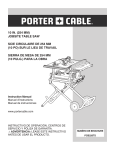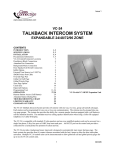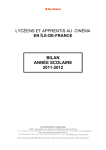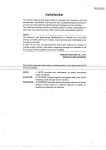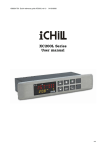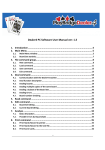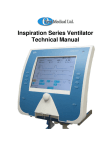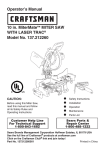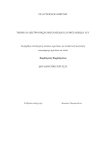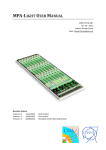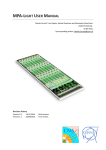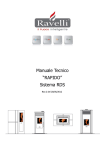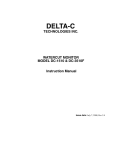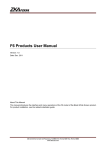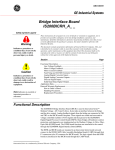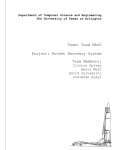Download User Manual of FT-50S (6U) PCM Multiplexer
Transcript
User Manual of FT-50S (6U) PCM Multiplexer B2 CH B1 CH A9 1 1 1 2 2 2 3 3 3 1 A8 CH CH A7 CH A6 CH A5 CH A4 CH A3 CH A2 CH A1 CH MST-A MST-B PWR-A CH 1 1 1 1 1 1 1 1 2 2 2 2 2 2 2 2 2 3 3 3 3 3 3 3 3 3 4 4 4 4 4 4 4 4 4 4 4 4 5 5 5 5 5 5 5 5 5 5 5 5 6 6 6 6 6 6 6 6 6 6 6 6 7 7 7 7 7 7 7 7 7 7 7 7 8 8 8 8 8 8 8 8 8 8 8 8 +5V ALM SAL NB T/R RUN ALM SAL NB T/R RUN -5V -48V MASK MASK MUTE MUTE Test Test OFF/ON B3 R FT-50S CH CH CH CH CH CH CH CH CH CH CH CH +5V 1 1 1 1 1 1 1 1 1 1 1 ALM ALM 2 2 2 2 2 2 2 2 2 2 2 2 3 3 3 3 3 3 3 3 3 3 3 3 NML NML 4 4 4 4 4 4 4 4 4 4 4 4 USE USE 5 5 5 5 5 5 5 5 5 5 5 5 6 6 6 6 6 6 6 6 6 6 6 6 7 7 7 7 7 7 7 7 7 7 7 7 8 8 8 8 8 8 8 8 8 8 8 8 -5V -48V OFF/ON 1 R FT-50S B4 B5 B6 B7 B8 B9 B10 B11 B12 B13 B14 B15 Ring-A Ring-B PWR-B Nanjing Photel Communication Technology Co., Ltd. Nanjing Photel Communication Technology Co., Ltd. 1999-2011 1 Table of Contents 1 1.1 1.2 1.3 1.4 1.5 1.6 1.7 1.8 Brief Introduction ....................................................................................................... 4 High density .................................................................................................................... 4 Abundant Access Interfaces ............................................................................................ 4 Powerful Net Management System................................................................................. 5 D/I (drop/insert) function ................................................................................................ 5 PABX function ................................................................................................................ 5 Optional OPT optical transmission unit .......................................................................... 5 Supper Reliability............................................................................................................ 5 Unique ID card design .................................................................................................... 6 2 2.1 2.2 Operation Principle and Configuration................................................................. 6 Operation Principle ......................................................................................................... 6 System Configuration...................................................................................................... 7 2.2.1 Power supply card................................................................................................ 8 2.2.2 Ring supply card ................................................................................................... 9 2.2.3 Master card............................................................................................................ 9 2.2.4 Channel card ......................................................................................................... 9 2.3 Application of Equipment ............................................................................................. 10 2.4 Equipment composition and operation.......................................................................... 12 2.4.1 Equipment composition ..................................................................................... 12 2.4.2 Functions of unit cards and operation instructions ........................................ 12 2.4.2.1 -48V Power supply card................................................................................ 12 2.4.2.2 AC/DC Power Supply Card .......................................................................... 13 2.4.2.3 Ring supply card ........................................................................................... 14 2.4.2.4 Master card.................................................................................................... 15 2.4.2.5 PDH Optical card .......................................................................................... 16 2.4.2.6 Access sub-channel card ............................................................................... 17 3 3.1 3.2 Technical Specification .......................................................................................... 29 Electrical Characteristics of 2M Interface..................................................................... 29 FXS and FXO Interface and Signaling ......................................................................... 30 3.2.1 FXO ...................................................................................................................... 30 3.2.2 FXS....................................................................................................................... 30 3.3 Ringing.......................................................................................................................... 31 3.3.1 Remote ringing current ...................................................................................... 31 3.3.2 Ringing testing .................................................................................................... 31 3.4 Audio Interfaces............................................................................................................ 31 3.4.1 2-wire tone ........................................................................................................... 31 3.4.2 4-wire tone ........................................................................................................... 32 3.4.3 Magneto interface............................................................................................... 33 3.4.3.1 Ordinary magneto interface........................................................................... 33 3.4.3.2 Carrier wave magneto audio interface........................................................... 33 3.4.4 Hotline telephone................................................................................................ 34 3.4.5 Synchronous data interface .............................................................................. 34 3.4.5.1 G.703 interface.............................................................................................. 34 3.4.5.2 Data interface ................................................................................................ 34 3.4.5.3 N*64K V.35 interface ................................................................................... 34 3.4.6 Asynchronous data interface ............................................................................ 34 3.4.7 10/100M Ethernet Data interface ..................................................................... 35 3.4.8 PDH Optical card................................................................................................ 35 Nanjing Photel Communication Technology Co., Ltd. 1999-2011 2 3.5 3.6 3.7 3.8 Monitoring Interface ..................................................................................................... 36 Power Supply ................................................................................................................ 36 Operation Environment................................................................................................. 36 The principle of test function ........................................................................................ 36 4 Sub-Rack Dimensions............................................................................................. 37 5 5.1 Installation.................................................................................................................. 37 Install the rack ............................................................................................................... 37 5.1.1 Install the rack to the 19inch shelf.................................................................... 37 5.1.2 Functional card configuration............................................................................ 38 5.1.3 Plug the cards ..................................................................................................... 39 5.1.4 Cable configuration ............................................................................................ 42 5.1.4.1 Take off the back cover................................................................................. 42 5.1.4.2 The power interface....................................................................................... 44 5.1.4.3 The alarm interface ....................................................................................... 45 5.1.4.4 The NMS system interface............................................................................ 46 5.1.4.5 Access channel interface ............................................................................... 46 5.1.4.6 Cable connector............................................................................................. 52 Nanjing Photel Communication Technology Co., Ltd. 1999-2011 3 1 Brief Introduction FT-50S (6U) PCM Multiplexer adopts 6U high standard 19" rack. It supports multiple analog and data access, and fiber/electronic integration. The maximum 64Kbps access capacity of FT-50S (6U) PCM Multiplexer is 192, and the maximum E1 access capacity is 64. FT-50S (6U) PCM Multiplexer can connect with other transmission equipment through its optical interface or standard E1 interface. It can realize point to point communication by E1 or optical interface; and it can execute D/I (drop/inset) function through its own 64E1 cross connection matrix; and it can realize PABX function with its relay card; and it can have online test functions including remote channel circuit test and subscriber line test. FT-50S (6U) PCM Multiplexer is provided with a powerful NMS system, by which the operating status of the network can be monitored in real time and the functions including malfunction locating, time slot reassignment and online test can be performed easily. The NMS information transmission: the FT serial equipment can be cascaded through RS232 port if the equipment is located in the same room, and they can be connected through TS0 time slot of E1 when the equipment is located in different rooms. The NMS console can be connected with the devices directly via RS232 port or ETH port, and graphical interface NMS, command line NMS or SNMP NMS can be realized, which can improve the efficiency of network management into a high level. FT-50S (6U) PCM Multiplexer has the following characteristics: 1.1 High density The system capacity is 192 64K channels. The system can access up to maximum 64 E1 interface. 1.2 Abundant Access Interfaces FT-50S (6U) PCM Multiplexer supports different types of user services: 64Kbps codirectional data and N×64Kbps synchronous data interface, 10/100M Ethernet interface, RS232 and RS485 asynchronous data interface, FXO, FXS, Hotline, Magneto, Carrier wave magneto interface and 2/4-wire E&M interface, etc. Nanjing Photel Communication Technology Co., Ltd. 1999-2011 4 1.3 Powerful Net Management System It is convenient to set cross connection and the level of analog interface, and read the devices’ settings by NMS Automatic online test function can realize level test and signaling test for analog interface, functional test for data interface, functional tests of A/B ground, short circuit for 2-wire subscribers, it is very convenient to locate malfunction quickly and correctly through the NMS. 1.4 D/I (drop/insert) function The D/I function can be configured by software, which make it very flexible to drop or insert channels. 1.5 PABX function The PABX function can be realized by the Relay card, the relay card will support China No.1 signaling, No.7 signaling, PRI signaling and V5 signaling. 1.6 Optional OPT optical transmission unit The OPT Optical transmission card can be selected by customer to reduce the equipment cost of the whole transmission system. The E1 interfaces of the equipment can be transmitted via optical interface. 8 E1 and 4 ETH will be transmitted via the OPT card, therein 4E1 will be transmitted directly, and the other 4E1 will enter 64E1 cross connection of the system. 1.7 Supper Reliability All key cards adopt redundant backup and support hot swappable, including power supply cards, ring supply cards and master cards. The FT-50S (6U) PCM Multiplexer adopts advanced circuit design and modular structure design, it uses low power consumption, high reliable components, and all functional cards support hot swap as well. Nanjing Photel Communication Technology Co., Ltd. 1999-2011 5 1.8 Unique ID card design The ID card is fixed in the shelf; it can identify the equipment’s ID, and store the configuration data file and dynamic operating data. So if changing other functional cards will not influence NMS to identify the equipment, which makes it more stable during switching master control card. 2 Operation Principle and Configuration 2.1 Operation Principle FT-50S (6U) PCM Multiplexer conforms to ITU G.703, G.704, G.706 and G.715 standards, each Sub-Rack contains up to 24 Access Channel cards, and each access channel cards hold 8 access channels, so each Sub-Rack contains 192 access channels. FT-50S (6U) PCM Multiplexer performs the digitalizing processing for the analogue audio signals, the transmitting system will multiplex the digital signals into standard E1 digital frame (these digital signals include the digitized signal from analogue interfaces and digital signal from the data interfaces.), multi-channel E1 signal will proceed 64K cross connection in the cross connection matrix. The output interface of the system is standard E1 or PDH optical interface. The receiving terminal will synchronize and decode the 2M signals, and proceed the reverse progress, and send the analogue audio signal or digital signal to the user. NMS management can be performed for both remote equipment and local equipment. The master card (MST card) will provide two RS232 network interface. The NMS connection mode is very flexible, the local equipment can be cascade connected through RS232 interface, and the remote equipment can be connected by TS0 channel of E1 interface or private NMS channel. Every product has an exclusive serial number, and this number is used as identification code by NMS. The NMS platform can connect with any node of the network, and FT-50S (6U) equipment can be connected in the “Chain” or “Tree” topology. The NMS console can simultaneously monitor the status of any equipment that manufactured by our company in the same network. The power supply cards are mutually backup, to provide power of +5V, -5V for the system. The ring supply cards are also mutually backup which Nanjing Photel Communication Technology Co., Ltd. 1999-2011 6 generate the ring signal for FXS, HOT, MAG, Carrier wave interface and the test function. The Master cards are also hot backup, and it will not influence the phone communication during switching the master cards. 2.2 System Configuration FT-50S (6U) PCM Multiplexer can be configured with two power supply cards, two ring supply cards, two master cards (you may use one of them only to reduce the cost) and 24 Access Channel cards (the types and number of channel card are optional). The number and type of the Access Channel cards is according to the requirements. The system configuration is as detailed below. Nanjing Photel Communication Technology Co., Ltd. 1999-2011 7 channel card×24 Master card×2 Ring supply×2 Power supply×2 Front view of FT-50S (6U) 2.2.1Power supply card One power supply card can be chosen to reduce the cost or two power cards to get more reliability. The two power cards are hot backup mutually, so no switch time needed. Nanjing Photel Communication Technology Co., Ltd. 1999-2011 8 2.2.2Ring supply card One ring supply card can be selected to reduce the cost or two ring cards to get more reliability. Because the ring card produces more heat when it is powered on, so the system will automatically switch off the ring card when the system doesn’t need ring. 2.2.3Master card One or two master card mode can be selected by user. The system will be more reliability when using two master cards, the master cards are back up mutually, no switch time need. 2.2.4Channel card There are 24 channel card slots in the FT-50S (6U) PCM Multiplexer. One channel card can hold two sub-channel cards (any types of sub-channel card). Each sub-channel card has 4 audio ports or 4 64Kbps data ports or 4E1 ports or one FV35 port or one Ethernet port. Two different types of sub-channel cards can be inserted into the same channel card. The channel card that inserted with E1 sub-channel card can be only plugged into slot A1 to A8 slots. And the other channel card can be plugged to any slot of the equipment. For sub-channel card 2 For sub-channel card 1 CH 1 2 3 4 5 6 7 8 Channel access card Nanjing Photel Communication Technology Co., Ltd. 1999-2011 9 There are eight LED on the panel of the channel card. The LED 1- 4 are corresponding to sub-channel card 1, and the LED 5 - 8 are corresponding to sub-channel card 2. Each LED has two colors: red and green. In application of 64Kbps services such as audio and low speed data communication, when the remote channel is absent, the LED will be red. When the remote channel is online, the red color will disappear. The LED will flash in green color when E or M of audio cards is effective, or the data card is running with low speed data. If the sub-channel card is 4 E1 card, the LED will never be green. When the E1 interface produces LOSS or FA, the LED will be red. If the sub-channel card is N×64Kbps card, the LED will not be red. When its data is running, the led will be green. If the sub-channel card is Ethernet card, the LED will not be red. When the Ethernet interface is connected successfully, the led will be green. 2.3 Application of Equipment FT-50S (6U) PCM Multiplexer has the ability to build up flexible network. FT-50S (6U) PCM Multiplexer has flexible networking ability. The basic mode is point-to-point over optical fiber or over transmission network. It also can be used as Drop/Insert equipment. The transmission media between local station and remote station can be optical fiber, satellite or microwave equipment. FT-50S FT-50S FT-50S FT-50S R R FT50S FT50S E1 Transmission network E1 R R FT50S FT50S Bay Networks Router 1 2 3 4 5 6 Phone 7 8 9 * AV 8 # AV PBX Nanjing Photel Communication Technology Co., Ltd. 1999-2011 PC 10 Communicating over transmission network FT-50S FT-50S FT-50S FT-50S R OPT R FT50S FT50S R R FT50S FT50S Bay Networks Router 1 2 3 4 5 6 Phone AV 7 8 9 * 8 # AV PBX PC Point-to-point communicating over optical fiber FT-50S FT-50S R FT50S E1 E1 R FT50S AV 1 2 3 Phone PC 4 5 6 7 8 9 * 8 # As a Drop/Insert equipment Nanjing Photel Communication Technology Co., Ltd. 1999-2011 11 2.4 Equipment composition and operation 2.4.1Equipment composition FT-50S (6U) PCM Multiplexer consists of the following unit cards: Power supply card, ring supply card, Master card, and Channel card. In normal situation, the Sub-Rack, power supply card and master card are basic configuration, and other access cards are optional according to the requirements. An ID card must be plugged into the backboard card. There are many types of data stored in the ID card. FT-50S (6U) must be equipped with ID card. 2.4.2Functions of unit cards and operation instructions 2.4.2.1 -48V Power supply card +5V -5V OFF/ON -48V R FT-50S PT-50S The main functions of the power supply card are voltage conversion and supplying power to the system. The equipment has two power supply card positions for mutual backup (one single power supply card can provide power for the system independently). The input is -48V; the output is +5V and -5V. There are 6 LED lights (3 LED for red color, 3 LED for green color) on the power supply card for -48V +5V and -5V. When the -48V is normal the LED is green, when there is no -48V power input, the LED will be red. When +5V is normal the LED is green, when +5V is abnormal the LED is red. When -5V is normal the LED is green, when -5V is abnormal the LED is red. The red light means alarm. The NMS terminal can mask the alarm states. Nanjing Photel Communication Technology Co., Ltd. 1999-2011 12 2.4.2.2 AC/DC Power Supply Card PT-50S +5V -5V -48/ 220 R PT-50S FT-50S AC/DC power supply card can connect with -48V DC power input from the rear power connector, and it also can connect with 220AC power input from the front panel. AC and DC power can provide power independently, and they also can work at the same time for mutual backup. The functions of this AC/DC power supply are the same as those of -48V power supply card. Nanjing Photel Communication Technology Co., Ltd. 1999-2011 13 2.4.2.3 Ring supply card ALM NML USE The ring supply card generates ring for FXS, HOT, CRR, MAG cards and testing modules. There are two ring supply card slots for ring supply card; they work in mutual back up. The ring supply card generates ringing signal of 75V, 25HZ and 30W sine wave. There are three LED in the panel of the ring supply card. The ALM will be red when the card has fault. If the card is in normal state, the NML led will be lit when the system needs the ring supply running. Only one ring supply card works at one time, and the other is in the backup state. USE led will be green when the card supplies ringing signal. If no ringing signal needed, all LED in the panel of the ring supply card will be off. Nanjing Photel Communication Technology Co., Ltd. 1999-2011 14 2.4.2.4 Master card Test control unit ALM SAL NB T/R RUN MASK MUTE Test FT-50S (6U) PCM Equipment can be equipped with two Master cards (one master card mode can be selected), it will realize the following functions: perform 2048×2048 non-blocking time slot cross connection, perform testing of all analogue and data channels, and perform net management function. The master card mainly consists of one CPU unit, time slot cross connection unit and channel testing unit. The test control unit is used for testing the audio ports and E/M signaling. Main functions of a Master card: • Indicating various alarm information, and running status. • Monitoring communication, reporting the system status to NMS console, and receiving control information from the NMS console. • When it is synchronized with the external clock, the clock is TTL level and is connected via a coaxial cable, and the external clock must be 2.048 MHz. • There are 5 LED on the panel of the master card. The indicators are defined as follows: ALM Red If any alarm occurred in the FT-50S (6U), the ALM will be red unless the alarm status is masked by NMS. SAL Yellow The SAL will be lit when the FT-50S (6U) is in the downloading state. For example, in progress of power on Nanjing Photel Communication Technology Co., Ltd. 1999-2011 15 and the data setting by NMS. NB Yellow Lit when the master card is switching to the backup card. T/R Green Lit when communication with NMS. RUN Green RUN led in the running master card will be lit, and the led in the backup card will be off. • User shuts the alarm bell and the ground signal by pressing the MASK button, but the alarm signals will recover when the new alarm occurs. • The MUTE key is the key with lock. If the key is pressed down, the alarm bell and the alarm ground signal will never appear. • There is a TEST socket on the panel of the master card, which can be controlled by the NMS; user can test the analog access channels with PCM meter. The channel number for testing is selected by NMS. The PCM meter is connected to TEST jack for testing (the testing module should be selected to realize this function). • The communication between the equipment and the NMS console is via the RS232 serial port. The RS232 connector is a RJ45 socket mounted on the backboard. There are two RS232 ports on the backboard. They can be connected in two directions. • The Master card performs time slot cross connection function, which can accomplish non-blocking cross connection for 64×E1 time slots. The cross connection matrix is 2048×2048. 2.4.2.5 PDH Optical card CH 1 2 3 4 5 6 7 TX OPT RX 8 The PDH Optical card adopts PDH optical transmission mode, its access Nanjing Photel Communication Technology Co., Ltd. 1999-2011 16 capacity is 8 E1 and 4 10/100M Ethernet interfaces. Herein 4E1 will enter FT-50S (6U) equipment’s cross connection matrix, and the other 4E1 will be output directly through rear connectors, which will be used by other access equipment. And the NMS can read the optical alarms of this optical card and the E1 alarms, and the NMS also can mask the warning status. The PDH optical card has two optical interfaces, which support hot swappable function, the optical module adopt the popular SFP optical module, which can be hot swappable, and it is convenient for maintenance. The PDH optical card’s first sub-channel card is the position (near to the front panel) that EOO ETH sub-channel card can be inserted, and the second sub-channel card position can insert any type of sub-channel cards, such as E1 card, analog card and data card. There are 8 two color LED lights, LED 5-8 is corresponding to the second sub-channel card, and the LED status definition is the same as the normal channel card. LED1-4 will indicate the status of optical interface, ETH and E1 interface. Herein 4 green LED is used as LINK indicators for 4 ETH interfaces, LED 1, 2 will indicate the receiving status of the first and second optical interfaces, when the optical synchronization, the corresponding LED is off, when the optical signal loss, the corresponding red LED is on; LED 3 indicates the alarm status of the first and second transparent E1 interface, when these two E1 interfaces has not alarms, the LED will be off, when the both E1 interfaces have alarms, the LED is lit, when the first E1 has alarm, and the second E1 doesn’t have alarms, the LED will flash slowly, and the second E1 has alarms, and the first E1 doesn’t have alarms, the LED will flash quickly; LED 4 indicates the alarm status of the third and forth transparent E1 interface, when these two E1 interfaces has not alarms, the LED will be off, when the both E1 interfaces have alarms, the LED is lit, when the third E1 has alarm, and the forth E1 doesn’t have alarms, the LED will flash slowly, and the forth E1 has alarms, and the third E1 doesn’t have alarms, the LED will flash quickly. 2.4.2.6 Access sub-channel card There are many types of Access sub-channel cards. FXS and FXO are for extension of subscriber line of PBX; 2/4-wire tone is for analogue trunk of PBX, MODEM or other analog line; the hotline interface, magneto phone interface and 2100 carrier wave interface are used for the special line application. 64Kbps data interface for low rate data communication, such as RS232 and V.35 etc; In Nanjing Photel Communication Technology Co., Ltd. 1999-2011 17 addition, the V.35 interface card and 10/100M Ethernet access card can access N×64Kbps data, the N can be 1 to 31. 2.4.2.6.1 FXO card This position is for testing module The main function of FXO card is used to connect with the subscriber lines of the switch. It is for extension of subscriber line of PBX. It is used with FXS card usually and for MODEM or analogue trunk of PBX .Its functions include: tone encoding and decoding, 2wire/4wire conversion, ringing signal testing, signaling decoding, etc. Each FXO card contains 4 channels. There is a position for Test module, it can test the audio level and the signaling of every channel and find that if the FXO interface is connected to the PBX firmly. The NMS System controls the testing process. More details please refer to the NMS manual. Nanjing Photel Communication Technology Co., Ltd. 1999-2011 18 2.4.2.6.2 FXS card This position is for testing module The main function of FXS card is to accomplish the encoding and decoding of audio signal, 2-wire/4-wire conversion, power feed for subscriber, transmitting ringing signal, over-voltage protection for outdoor user lines, etc. Each FXS card contains 4 channels. The FXS card is usually connected with FXO, for example, the local interface is FXO, and then the remote interface must be FXS. There is a position for Test module. The module is used for testing the audio level, the signaling of every channel and outdoor twisted cable. User can test the outdoor twisted cable whether the cable is shorted, opened and grounded. The NMS System controls the testing process. More details please refer to the NMS manual. Nanjing Photel Communication Technology Co., Ltd. 1999-2011 19 2.4.2.6.3 4-wire E&M audio card This position is for testing module The main functions of the 4-wire E&M audio card include voice encoding and decoding, and providing independent audio transmitting/receiving channel, accessing E and M signal. Each card contains 4 channels. This interface is usually used for connection with a tone Modem. The NMS can adjust the attenuation of the channel. There is a position for Test module that for testing the audio level of transmitting, the audio level of receiving and the E/M signal of each channel. The NMS System controls the testing process. More details please refers to the NMS manual. Nanjing Photel Communication Technology Co., Ltd. 1999-2011 20 2.4.2.6.4 Co-directional data card This position is for testing module Each Co-directional data card contains 4 channels. They conform to ITU-T G.703 standard. The test modules are used for testing whether the data channels are working correctly. The NMS System controls the testing process. 2.4.2.6.5 RS232 card This position is for testing module Each RS232 data card contains 4 channel asynchronous RS232 data interfaces. They conform to ITU-T V.24/V.28 standard. The test module is for Nanjing Photel Communication Technology Co., Ltd. 1999-2011 21 testing whether the data channels are working correctly. The NMS System controls the testing process. 2.4.2.6.6 N×64Kbps FV.35 card This position is for testing module Each N×64Kbps data card contains 1 channel synchronous N×64Kbps V.35 data interface, N is from 1 to 31. There is a position for test module. The test module is for testing whether the data channel is working correctly. The NMS System controls the testing process. Nanjing Photel Communication Technology Co., Ltd. 1999-2011 22 2.4.2.6.7 Magneto interface card This position is for testing module The Magneto interface card provides magneto interfaces to connect with a magneto set or magneto attendant console. The signaling transmission of this card adopts the digital signaling mode; it is the same as that of PCM. The audio channel parameters and output are the same as ordinary audio ports. The main functions are tone encoding and decoding for telephone, testing of calling signal, and ringing for subscriber, etc. Each card contains 4 channels. There is position for Test module that is used for testing the audio level, the signaling of every channel and the outdoor twisted cable. User can test the outdoor twisted cable whether the cable is shorted, opened and grounded. The NMS System controls the testing process. More details please refer to the NMS manual. Nanjing Photel Communication Technology Co., Ltd. 1999-2011 23 2.4.2.6.8 Carrier wave magneto interface card This position is for testing module The carrier wave magneto interface card provides a magneto interface for connection with a magneto set or magneto attendant console. Different from the ordinary magneto interface card, the signaling transmitted on this card is 2100Hz signal. This card has the conversion function between 25Hz ringing signal and 2100Hz audio signal. There is a position for Test module that is used for testing the audio level, the signaling of every channel and the testing outdoor twisted cable. User can test the outdoor pair cable if the cable is shorted, opened and grounded. The NMS System controls the testing process. More details please refers to the NMS manual. Nanjing Photel Communication Technology Co., Ltd. 1999-2011 24 2.4.2.6.9 Hotline telephone card This position is for testing module The main functions of the hotline telephone card are hotline telephone tone encoding and decoding, hook-off and hook-on testing, feeding power to telephone set and ringing. Each card contains 4 hotlines. There is a position for Test module that is used for testing the audio level, the signaling of every channel and the outdoor twisted cable. User can test the outdoor twisted cable if the cable is shorted, opened and grounded. The NMS System controls the testing process. More details please refer to the NMS manual. Nanjing Photel Communication Technology Co., Ltd. 1999-2011 25 2.4.2.6.10 10/100M Ethernet data interface card In FT-50S (6U) PCM Multiplexer, the 10/100BASE-T interface is usually for interconnection of Ethernet. The real speed of the port will be N×64Kbps, the value N is from 1 to 31 and will be set by NMS. 2.4.2.6.11 4E1 card Nanjing Photel Communication Technology Co., Ltd. 1999-2011 26 4E1 card has four E1 framers. The output/input impedance can be 75 ohm or 120ohm, it is self-adjustment. This 4E1 card will execute 4E1 connection with the master card, and the NMS can read alarms information and impedance setting information of this 4E1 card, and the NMS can control the E1 running mode (the NMS can set it as PCM30 or PCM31 mode), and can set self-loop for E1 interface. 2.4.2.6.12 EOO card EOO(Ethernet Over Optical) card will accomplish the connection between 4 channel Ethernet and optical link. Its total speed is 100M, and these 4 Ethernet interfaces can set VLAN or not by jumpers. Nanjing Photel Communication Technology Co., Ltd. 1999-2011 27 2.4.2.6.13 Relay card One Relay card can access 4E1, and each E1 can adopt different protocols including: China No.1 signaling, PRI signaling, SS7 signaling or V5 signaling protocol. Theoretically one FT-50S (6U) can insert up to 16pcs relay card, and can be connected with 64 switches (these switches can be different protocols) separately. When the FT-50S (6U) equipment is equipped with the relay card, the cross connection matrix can assign certain FXS interfaces to the designated relay card in master card, which will become a PABX switch with relay interface, then it can realize free dialing among FXS interfaces, FXS interfaces and remote switches, and it also support three party call, and realize basic functions of PABX switch. Nanjing Photel Communication Technology Co., Ltd. 1999-2011 28 2.4.2.6.14 HDSL Card The HDSL card can be inserted into the slots that E1 can be inserted. HDSL interface is 2-wire mode, and the multiplexing mode is TC-PAM, the maximum transmission distance is 3.5km through 0.4mm diameter civil telephone cable. Each HDSL interface card can transfer one E1 interface. The E1 interface of HDSL card will enter cross connection matrix of the equipment, this cross connection matrix will distribute the time slot channel. The clock mode of the HDSL card will be set by the NMS. 3 Technical Specification 3.1 Electrical Characteristics of 2M Interface • Bit rate: 2048Kbps±50ppm • Code type: HDB3 code, conforming to G.703 standard • Input impedance: 75Ω (unbalanced interface), 120Ω (balanced interface) optional • Frame structure: Conforming to G.704, G.706 Nanjing Photel Communication Technology Co., Ltd. 1999-2011 29 • Compression law: Conforming to G.711 • Level: ±2.37V±10% • The pulse waveform conforms to a sample as shown below. 269ns 20% V = 100% 10% 194ns 10% 标 称 脉 冲 波 形 20% 50% 244ns 219ns 10% 0% 10% 10% 10% 20% 488ns Nominal pulse waveform Waveform sample of 2M-line code 3.2 FXS and FXO Interface and Signaling 3.2.1FXO Hook-off impedance: < 500Ω Hook-on impedance: > 10KΩ 3.2.2FXS Loop impedance: 2000Ω (including telephone set) Idle user line voltage: 50V Loop current: 25mA Nanjing Photel Communication Technology Co., Ltd. 1999-2011 30 Hook-off threshold: 8mA 3.3 Ringing 3.3.1Remote ringing current Frequency: 25Hz ± 3Hz Magnitude: 75V ± 5Vrms Time delay of ringing current: < 50 ms 3.3.2Ringing testing Magnitude range: > 38Vrms 3.4 Audio Interfaces 3.4.1 2-wire tone Impedance: 600 Audio frequency 300-3400 Hz range: Encoding law: 2-wire level: G.711 A law in CCITT Recommendation Interface 2-wire sending: Return loss: 0dBr ± 0.5dBr 2-wire receiving: -3.5dBr ± 0.5dBr 300-600Hz >12dB 600-3400Hz >15dB Frequency response: 300-3400Hz deviation conforming to requirement in 5.5 of GB/T 6879-1995 Idle noise: ≤ -65dBm0p Gain: Conforming to requirement in 5.11 of GB/T 6879-1995 Nanjing Photel Communication Technology Co., Ltd. 1999-2011 31 Total S/N ratio: Conforms to ITU G.713 sample. Input level 2-wire interface total S/N ratio sample 3.4.2 4-wire tone Attenuator of 4-wire tone cards can be changed by NMS System 4-wire Interface level: 4-wire transmitting:-10dBr±0.5dBr (the change range is 16 dB) 4-wire receiving: -10dBr ±0.5dBr (the change range is 16 dB) Impedance 600 Audio range 300-3400 Hz frequency Encoding law -wire level: G.711 A law Recommendation in CCITT Interface 4-wire transmitting: -14dBr 4-wire receiving: +4dBr Return loss: 300-3400Hz >20dB Frequency response: 300-3400Hz deviation conforming to requirement in 5.5 of GB/T 6879-1995 Idle noise: ≤ -65dBm0 Nanjing Photel Communication Technology Co., Ltd. 1999-2011 32 Gain: Conforming to requirement in 5.11 of GB/T 6879-1995 Total S/N ratio: Conforms to ITU G.713 sample. 3.4.3Magneto interface 3.4.3.1 Ordinary magneto interface Voice parameters are the same as that of ordinary 2-wire tone (see 3.4.1.1) Ringing signal test: min. 20Vrms, testing time 0.5s. Signaling mode: digital mode (PCM 16-time slot A code) 3.4.3.2 Carrier wave magneto audio interface 1. Audio 2-wire Interface level: 2-wire sending: 0dBr ±0.5dBr 2-wire receiving: -3.5dBr± 0.5dBr Other parameters are the same as ordinary 2-wire tone (see 3.4.1.1) 2. Signaling: a. Ringing signal test: min. 20Vrms. b. Signaling mode: analogue mode —— 2100Hz audio signal. c. 2100Hz signal generator Magnitude: -6dBm ±1dBm Frequency: 2100Hz ± 5Hz d. Signaling testing Magnitude range: not less than -17dBm Nanjing Photel Communication Technology Co., Ltd. 1999-2011 33 Frequency range: 2100Hz ± 50Hz 3.4.4Hotline telephone Loop impedance: 2000Ω (including telephone set) Idle circuit voltage: Loop current: -48V 25mA Hook-off threshold: 8mA 3.4.5Synchronous data interface 3.4.5.1 G.703 interface Interface code type: data interface standard Interface rate: 3.4.5.2 conforming to CCITT G.703 synchronous 64Kbps synchronous data Data interface Interface level: conforming to CCITT V.35, V.24, V.28 or V.11 Interface rate: 64Kbps standard 3.4.5.3 N*64K V.35 interface Interface level: standard (optional) conforming to CCITT V.35 standard or V.11 Interface rate: N*64Kbps (N=1 ~ 31) 3.4.6Asynchronous data interface Interface level:conforming to RS-232/ V.24 standard or RS-422V.11 standard (optional) Interface rate: less than or equal to 14.4Kbps asynchronous data Nanjing Photel Communication Technology Co., Ltd. 1999-2011 34 3.4.7 10/100M Ethernet Data interface • 10/100Base-T interface speed self-adaptive. • Able to memorize 10,000 MAC address and LAN address list. • Buffering capacity: 256 frames, and 1 frame transfer delay. 3.4.8 PDH Optical card The PDH optical card can provide 4 channel 100M Ethernet interfaces and 8E1 interfaces, herein 4 E1 interfaces will be output directly, which will be used by other access equipment, and the other 4E1 will enter cross connection matrix of the equipment. E1 interface characteristics: Bit-rate: 2048Kbps±50ppm Code type: HDB3 code, conforming to G.703 standard Input impedance: 75Ω (unbalanced interface), Optical interface characteristics: Light wavelength: 1310nm or1550nm Light source: Single mode FC/SC socket Average optical output power: -10dBm or -14dBm (typical) 0dBm and -6dBm (optional) Receiving sensitivity: -34dBm Maximum permissible input optical power: Ethernet interface characteristics: 10/100Base-T interface self-adaptive Has VLAN function -14dBm Nanjing Photel Communication Technology Co., Ltd. 1999-2011 35 3.5 Monitoring Interface Two RS232 interfaces, adopting RJ45 socket, 9600 bps, 8 data bits, 1 stop bit. 3.6 Power Supply Input voltage: Standard value -48Vdc Voltage range: -36Vdc to -72Vdc Power consumption: <100W (when no hook off or ringing) 3.7 Operation Environment Temperature: Humidity: Air pressure: 0-45℃ ≤85% (30℃) (70~106) Kpa 3.8 The principle of test function FT-50S (6U) may test most interface cards. For instance, The procedure of FXS card test is below: a. Select the channel number of FXS interface in the NMS. b. Connect the FXO circuit in the test unit with the FXS interface by setting the MPU of the MST card. c. Control FXO, and make the FXS into hook-off state. Then the MPU will read the state that the FXS is in hook off state, which means that the transmitting signal is correct. d. MPU controls the output ringing signal of FXS. If the FXO circuit in the test unit will receive the ringing signal, which means that the receiving signal is correct. e. MPU writes a series of data to the receiving port of the FXS. The data includes amplitude and frequency. And MPU reads another series of data from sending port of the FXO. MPU sends the received data to the NMS platform. The NMS platform calculates and gets the result and tells Nanjing Photel Communication Technology Co., Ltd. 1999-2011 36 whether the receiving port of the FXS is correct. f. MPU writes a series of data to the receiving port of the FXO in the test unit. This data includes amplitude and frequency. And read another series of data from sending part of the FXS. MPU sends the receiving data to the NMS platform. The NMS platform calculates and gets the result and tells whether the sending port of the FXS is correct or not. The procedures of RS232 card test are as follows: a. Make the TX line and RX line of the RS232 shorted by setting MPU of the MST card. b. Writes a series data to the receiving port of the RS232. c. The MPU will get the same data from the sending port of the RS232. If so, the RS232 interface is correct. 4 Sub-Rack Dimensions B2 CH B1 CH A9 CH A8 CH A7 CH A6 CH A5 CH A4 A3 CH CH A2 CH A1 CH MST-A MST-B PWR-A CH 1 1 1 1 1 1 1 1 1 1 1 1 2 2 2 2 2 2 2 2 2 2 2 2 3 3 3 3 3 3 3 3 3 3 3 3 4 4 4 4 4 4 4 4 4 4 4 4 5 5 5 5 5 5 5 5 5 5 5 5 6 6 6 6 6 6 6 6 6 6 6 6 7 7 7 7 7 7 7 7 7 7 7 7 8 8 8 8 8 8 8 8 8 8 8 8 +5V ALM SAL NB T/R RUN ALM SAL NB T/R RUN -5V -48V MASK MASK MUTE MUTE Test Test OFF/ON B3 R FT-50S CH CH CH CH CH CH CH CH 1 1 1 1 1 1 1 1 1 1 1 2 2 2 2 2 2 2 2 2 2 2 2 3 3 3 3 3 3 3 3 3 3 3 3 4 4 4 4 4 4 4 4 4 4 4 4 5 5 5 5 5 5 5 5 5 5 5 5 6 6 6 6 6 6 6 6 6 6 6 6 7 7 7 7 7 7 7 7 7 7 7 7 8 8 8 8 8 8 8 8 8 8 8 8 +5V ALM ALM NML NML USE USE -5V -48V OFF/ON CH CH CH CH 1 R FT-50S B4 B5 B6 B7 B8 B9 B10 B11 B12 B13 B14 B15 Ring-A Ring-B PWR-B Weight: 15kg 5 Installation 5.1 Install the rack 5.1.1Install the rack to the 19inch shelf Use eight 6×10 screws to fix the rack into the standard 19 inch shelf. Please do not cover the top and the bottom of the rack for heat dissipation. Nanjing Photel Communication Technology Co., Ltd. 1999-2011 37 B2 CH 1 B1 CH 1 A9 CH 1 A8 CH A7 CH 1 1 A6 CH A5 CH 1 1 A4 CH A3 CH CH 1 1 A2 1 A1 CH MST-A MST-B PWR-A CH 1 1 2 2 2 2 2 2 2 2 2 2 2 2 3 3 3 3 3 3 3 3 3 3 3 3 4 4 4 4 4 4 4 4 4 4 4 4 5 5 5 5 5 5 5 5 5 5 5 5 6 6 6 6 6 6 6 6 6 6 6 6 7 7 7 7 7 7 7 7 7 7 7 7 8 8 8 8 8 8 8 8 8 8 8 8 +5V ALM SAL NB T/R RUN ALM SAL NB T/R RUN -5V -48V MASK MASK MUTE MUTE OFF/ON B3 R FT-50S Test CH CH CH CH CH CH CH CH CH CH CH Test CH 1 1 1 1 1 1 1 1 1 1 1 1 2 2 2 2 2 2 2 2 2 2 2 2 +5V ALM ALM NML USE 3 3 3 3 3 3 3 3 3 3 3 3 NML 4 4 4 4 4 4 4 4 4 4 4 4 USE 5 5 5 5 5 5 5 5 5 5 5 5 6 6 6 6 6 6 6 6 6 6 6 6 7 7 7 7 7 7 7 7 7 7 7 7 8 8 8 8 8 8 8 8 8 8 8 8 -5V OFF/ON -48V R FT-50S B4 B5 B6 B7 B8 B9 B10 B11 B12 B13 B14 B15 Ring-A Ring-B PWR-B Front view Eight install positions 5.1.2Functional card configuration First of all, the ID card should be installed in the rack. Position for ID card Nanjing Photel Communication Technology Co., Ltd. 1999-2011 38 Plug in the cards that you want to use. You should plug the functional cards into the corresponding positions. The 4E1 card, N×64K card and ETH card can be only plugged in slot A1 to A8 positions. 5.1.3Plug the cards Firstly, you should make the handle of the card in horizontal direction. Plug the card into the corresponding position. The card should be plugged in along the gap of the rack. Because the slot gap in the underside is a little wider, so the card should follow the right side. Nanjing Photel Communication Technology Co., Ltd. 1999-2011 39 The gaps You must make the card upright position and slide in carefully. Nanjing Photel Communication Technology Co., Ltd. 1999-2011 40 When the handle reaches the rack, you can screw the handle till the card is in the rack totally. Nanjing Photel Communication Technology Co., Ltd. 1999-2011 41 5.1.4Cable configuration 5.1.4.1 Take off the back cover. For configuring the cables, the back cover should be taken off Nanjing Photel Communication Technology Co., Ltd. 1999-2011 42 firstly. When all cables have been connected, the back cover should be mounted again to avoid damage of the equipment. Nanjing Photel Communication Technology Co., Ltd. 1999-2011 43 Alarm interface Power input 5.1.4.2 External clock NMS cable in Access channel The power interface FT-50S (6U) has two power input interfaces. Each interface has two pins, one is positive pin and the other is negative pin. The power voltage is 48V. At least one input interface must be needed. Two input interfaces will mutually backup. Two positive pins are linked together inside the FT-50S (6U). To configure the power interface, you should use the power cable of one square millimeter, and peel off the skin about 5mm, and fix the cable to the connector tightly with two screws. The screw S1 and S2 are used to tighten the power cable and S3 and S4 are used to tighten the connector to FT-50S (6U). Nanjing Photel Communication Technology Co., Ltd. 1999-2011 44 S3 Positive pole S1 Negative pole S2 S4 5.1.4.3 The alarm interface There is one alarm output interface for central monitoring. When the FT-50S (6U) alarms, it will produce the ground signal at BELL and LED, which will be used to ring the bell and light the alarm light. BELL GND LED GND Nanjing Photel Communication Technology Co., Ltd. 1999-2011 45 5.1.4.4 The NMS system interface There are two RS232 ports for NMS. These two ports are independent, and can be used to connect other equipment or the NMS terminal. Pin 1 Define 2 3 T R 4 5 6 GND 7 8 PWR PWR T is RS232 signal from the FT-50S (6U). R is RS232 signal to FT-50S (6U). GND is the ground signal. PWR will provide +5V power supply for FT-50S (6U). This power is used for NMS Ethernet adaptor. 5.1.4.5 Access channel interface There are 24 access card positions for channel interfaces. The name of the card position is A1 to A8 and B0 to B15. The pin assignment for these is as below: Nanjing Photel Communication Technology Co., Ltd. 1999-2011 46 Access interface pin assignment (table 1): V.35 G703 RS23 2 4W 2W A C 2W 4W RS23 2 G703 V.35 RXD1+ INA1 TXD1 4WTT1 2WT1 1 1 2WR1 4WTR1 TXD2 OUTA 1 RXD2+ RXD1- INB1 4WTT2 2WT2 2 2 2WR2 4WTR2 OUTB 1 RXD2- TC1+ INA2 4WTT3 2WT3 3 3 2WR3 4WTR3 OUTA 2 TC2+ TC1- INB2 4WTT4 2WT4 4 4 2WR4 4WTR4 OUTB 2 TC2- TXD1+ INA3 RXD1 4WRT1 5 5 4WRR1 RXD2 OUTA 3 TXD2+ TXD1- INB3 GND 4WRT2 6 6 4WRR2 GND OUTB 3 TXD2- RC1+ INA4 4WRT3 7 7 4WRR3 OUTA 4 RC2+ RC1- INB4 4WRT4 8 8 4WRR4 OUTB 4 RC2- E1 9 9 M1 E2 10 10 M2 E3 11 11 M3 E4 12 12 M4 RXD3+ GND TXD3 RXD3TC3+ GND TC3- GND TXD4 RXD3+ RXD3- GND TC3+ TC3- TXD3+ RXD3 13 13 RXD4 TXD3+ TXD3- GND 14 14 GND TXD3- RC3+ 15 15 RC3+ RC3- 16 16 RC3- RXD5+ INA5 TXD5 RXD5- INB5 TC5+ INA6 TC5- INB6 TXD5+ INA7 RXD5 TXD5- INB7 GND RC5+ RC5- OUTA 5 RXD6+ OUTB 5 RXD6- OUTA 6 TC6+ OUTB 6 TC6- RDX6 OUTA 7 TXD6+ GND OUTB 7 TXD6- 4WRR7 OUTA 8 RC6+ 4WRR8 OUTB 8 RC6- 4WTT5 2WT5 17 17 2WR5 4WTR5 4WTT6 2WT6 18 18 2WR6 4WTR6 4WTT7 2WT7 19 19 2WR7 4WTR7 4WTT8 2WT8 20 20 2WR8 4WTR8 4WRT5 21 21 4WRR5 4WRT6 22 22 4WRR6 INA8 4WRT7 23 23 INB8 4WRT8 24 24 GND Nanjing Photel Communication Technology Co., Ltd. 1999-2011 TXD6 GND 47 RXD7+ TXD7 RXD7TC7+ GND TC7- E5 25 25 M5 E6 26 26 M6 E7 27 27 M7 E8 28 28 M8 TXD8 RXD8+ RXD8- GND TC8+ TC8- TXD7+ RXD7 29 29 RXD8 TXD8+ TXD7- GND 30 30 GND TXD8- RC7+ 31 31 RC8+ RC7- 32 32 RC8- Nanjing Photel Communication Technology Co., Ltd. 1999-2011 48 Access interface pin assignment (table 2): RS422 RS485 4E1 ETH FV35 A C FV35 ETH 4E1 RS485 RS422 TXD1+ TXD1+ INT1 TDN1 RXD1+ 1 1 RC1+ TDN2 INR1 TXD2+ TXD2+ TXD1- TXD1- OUTT1 TDP1 RXD1- 2 2 RC1- TDP2 OUTR1 TXD2- TXD2- INT2 RDN1 TCA1+ 3 3 GND RDN2 INR2 OUTT2 RDP1 TCA1- 4 4 DSR1 RDP2 OUTR2 RXD1+ RXD1+ INT3 TXD1+ 5 5 CTS1 INR3 RXD2+ RXD2+ RXD1- RXD1- OUTT3 TXD1- 6 6 RTS1 OUTR3 RXD2- RXD2- INT4 TCB1+ 7 7 DTR1 INR4 OUTT4 TCB1- 8 8 CDT1 OUTR4 TXD3+ TXD3+ TDN3 9 9 TDN4 TXD4+ TXD4+ TXD3- TXD3- TDP3 10 10 TDP4 TXD4- TXD4- RDN3 11 11 RDN4 RDP3 12 12 RDP4 RXD3+ RXD3+ 13 13 RXD4+ RXD4+ RXD3- RXD3- 14 14 RXD4- RXD4- 15 15 16 16 TXD5+ TXD5+ INT5 TDN5 RXD2+ 17 17 RC2+ TDN6 INT5 TXD6+ TXD6+ TXD5- TXD5- OUTT5 TDP5 RXD2- 18 18 RC2- TDP6 OUTT5 TXD6- TXD6- INT6 RDN5 TCA2+ 19 19 GND RDN6 INT6 OUTT6 RDP5 TCA2- 20 20 DSR2 RDP6 OUTT6 RXD5+ RXD5+ INT7 TXD2+ 21 21 CTS2 INT7 RXD6+ RXD6+ RXD5- RXD5- OUTT7 TXD2- 22 22 RTS2 OUTT7 RXD6- RXD6- INT8 TCB2+ 23 23 DTR2 INT8 OUTT8 TCB2- 24 24 CDT2 OUTT8 TXD7+ TXD7+ TDN7 25 25 TDN8 TXD8+ TXD8+ TXD7- TXD7- TDP7 26 26 TDP8 TXD8- TXD8- RDN7 27 27 RDN8 RDP7 28 28 RDP8 RXD7+ RXD7+ 29 29 RXD8+ RXD8+ RXD7- RXD7- 30 30 RXD8- RXD8- 31 31 32 32 Nanjing Photel Communication Technology Co., Ltd. 1999-2011 49 Access interface pin assignment (table 3): HDSL SYN232 A C SYN232 HDSL TIP1 TXD1 1 1 TXD2 RING1 2 2 3 3 4 4 RXD1 5 5 RXD2 GND 6 6 GND 7 7 8 8 9 9 10 10 11 11 12 12 CLKR1 13 13 CLKR2 GND 14 14 GND 15 15 16 16 17 17 18 18 19 19 20 20 RXD3 21 21 RXD4 GND 22 22 GND 23 23 24 24 25 25 26 26 27 27 28 28 CLKR3 29 29 CLKR4 GND 30 30 GND 31 31 32 32 GND CLKT1 GND TIP2 TXD3 GND CLKT3 GND GND CLKT2 GND TXD4 RING2 GND CLKT4 GND Nanjing Photel Communication Technology Co., Ltd. 1999-2011 50 Description about the signal name in the assignment table: a. Port 2W means two-wire port, such as FXS, FXO, HOT, CRR and MAG. 2WT means 2wire A and 2WR means 2wire B b. Port 4W means 4-wire with E&M port. 4WTT and 4WTR means 4 wire transmission (input) signal, 4WRT and 4WRR means 4wire receiving (output) signal. c. Port RS232 TXD is the RS232 output signal from FT-50S (6U) and the RXD is the RS232 input signal to FT-50S (6U). d. Port V.35 RXD+ is the positive data signal to FT-50S (6U) and the RXD- is the negative data signal to FT-50S (6U). RXD+ and RXD- is a pair of signal. TXD+ is the positive data signal from FT-50S (6U) and the TXD- is the negative data signal from FT-50S (6U). TXD+ and TXD- is a pair of signal. TC+ is the positive clock signal from FT-50S (6U) and the TC- is the negative clock signal from FT-50S (6U). TC+ and TC- is a pair of signal. RC+ is the positive clock signal to FT-50S (6U) and the RC- is the negative clock signal to FT-50S (6U). RC+ and RC- is a pair of signal. e. Port FV35 is N×64Kbps V.35 interface P is the positive data signal to FT-50S (6U) and the S is the negative data signal to FT-50S (6U). P and S is a pair of signal. R is the positive data signal from FT-50S (6U) and the T is the negative data signal from FT-50S (6U). R and T is a pair of signal. Y is the positive clock signal from FT-50S (6U) and the AA is the negative clock signal from FT-50S (6U). Y and AA is a pair of signal. V is the positive clock signal from FT-50S (6U) and the X is the negative clock signal from FT-50S (6U). V and X is a pair of signal. U is the positive clock signal to FT-50S (6U) and the W is the negative clock signal to FT-50S (6U). U and W is a pair of signal. DSR, CTS and CDT are from FT-50S (6U). RTS and DTR are to FT-50S (6U). these five signals are for handshaking. f. Port ETH Nanjing Photel Communication Technology Co., Ltd. 1999-2011 51 TDN and TDP are the Ethernet output signal from FT-50S (6U). RDN and RDP are the Ethernet input signal to FT-50S (6U). g. Port 4E1 INT and INR are the E1 input signal to FT-50S (6U) and the OUTT and OUTR are the E1 output signal from FT-50S (6U). h. Port RS422 All digital signal line is the same as V35. i. Port RS485 R(T)XD+ and R(T)XD- are the bi-directional bus of RS485. 5.1.4.6 Cable connector FT-50S (6U) uses the standard connector to lead the cable to the interface socket, then insert this connector into the corresponding position in the back of FT-50S (6U). According to the application, the twist pair cable is used for audio ports, and the UTP cable is used for data ports. Nanjing Photel Communication Technology Co., Ltd. 1999-2011 52




















































